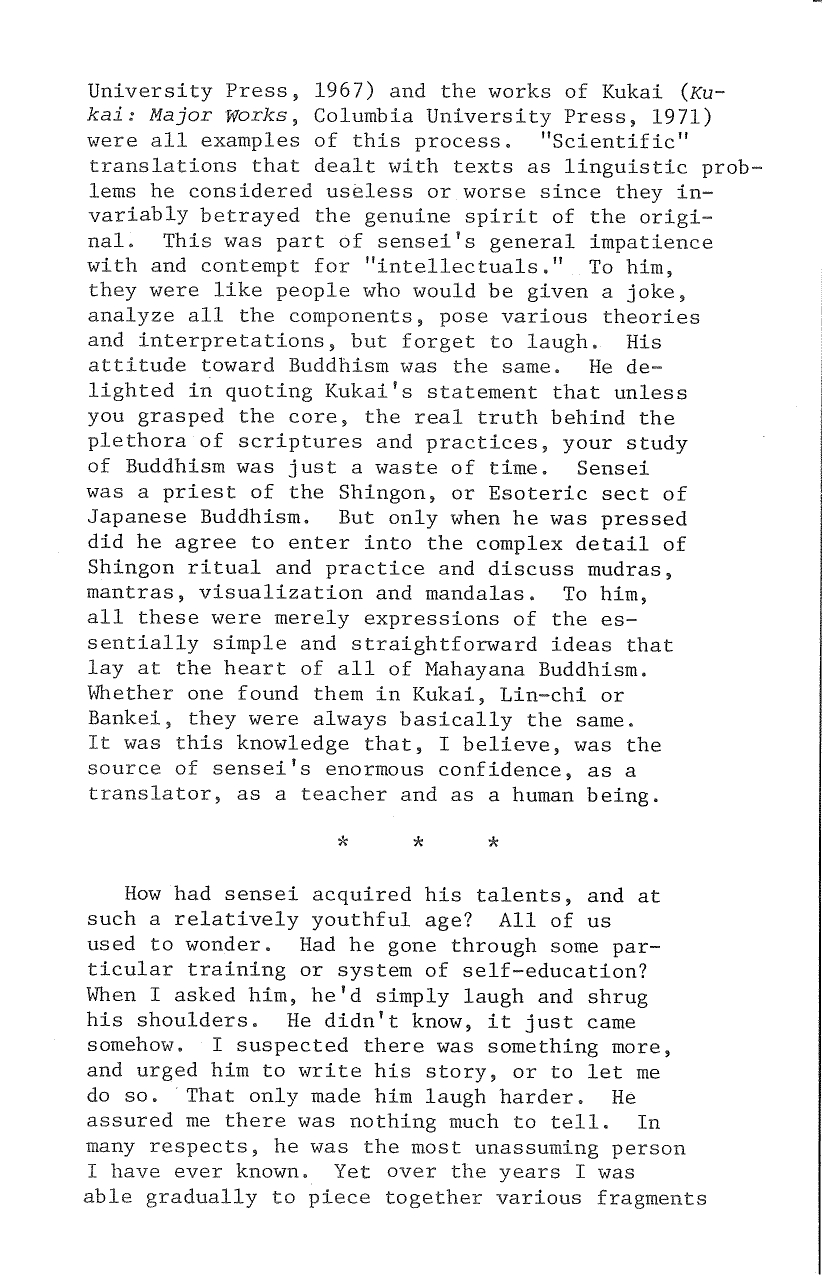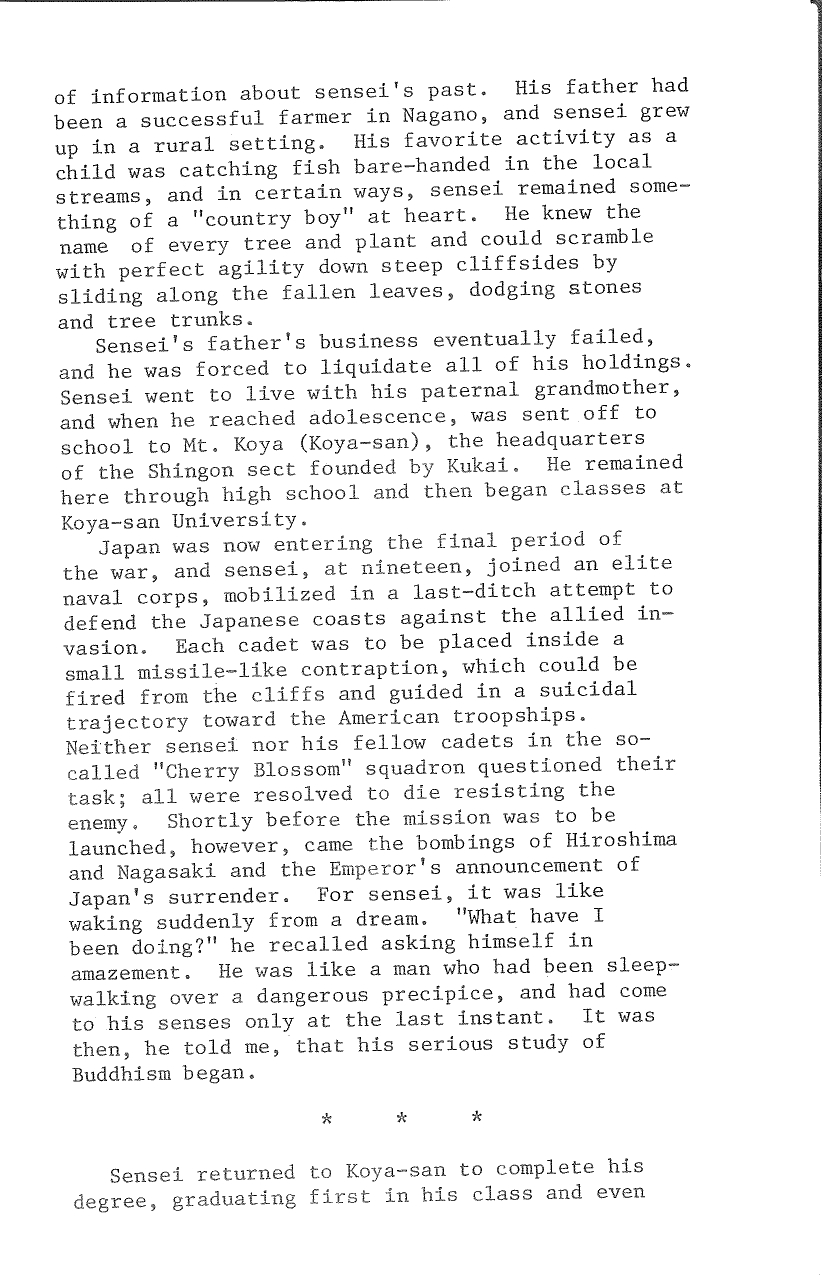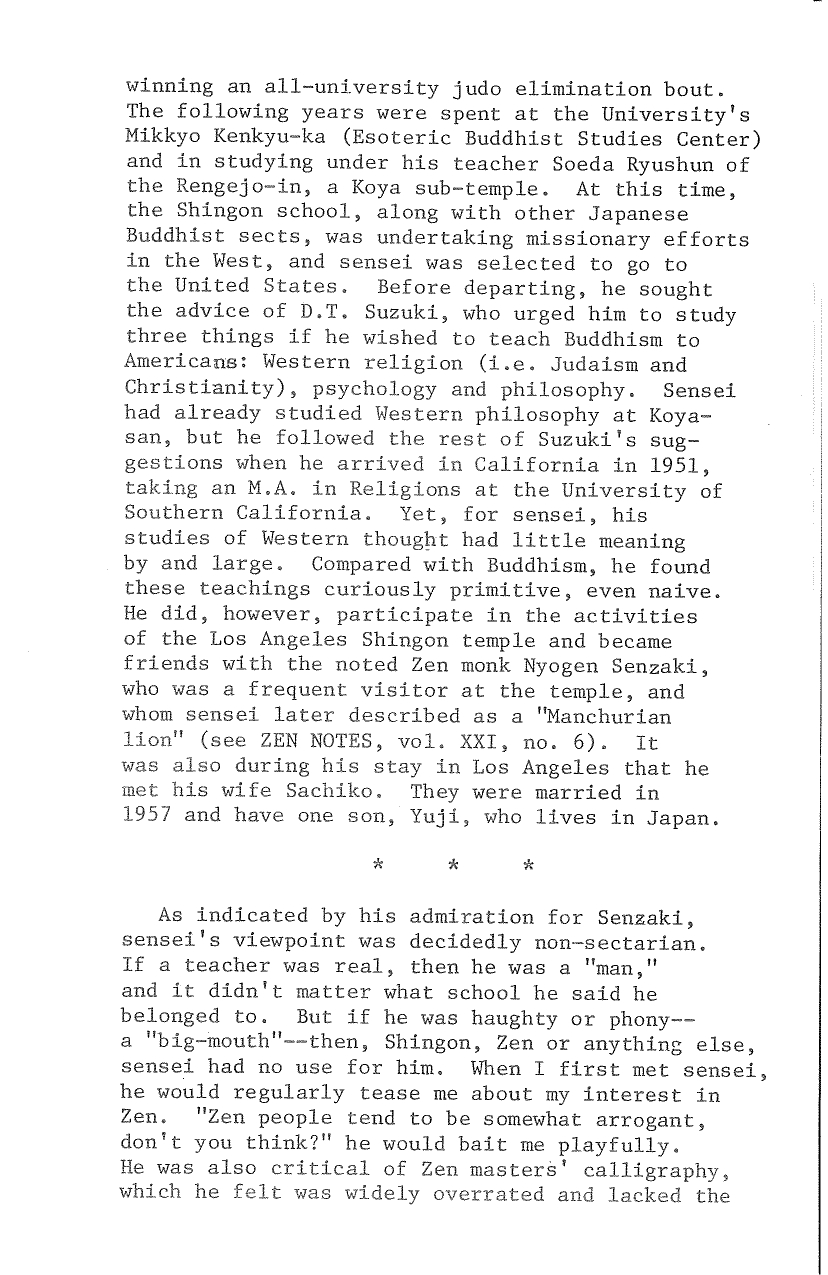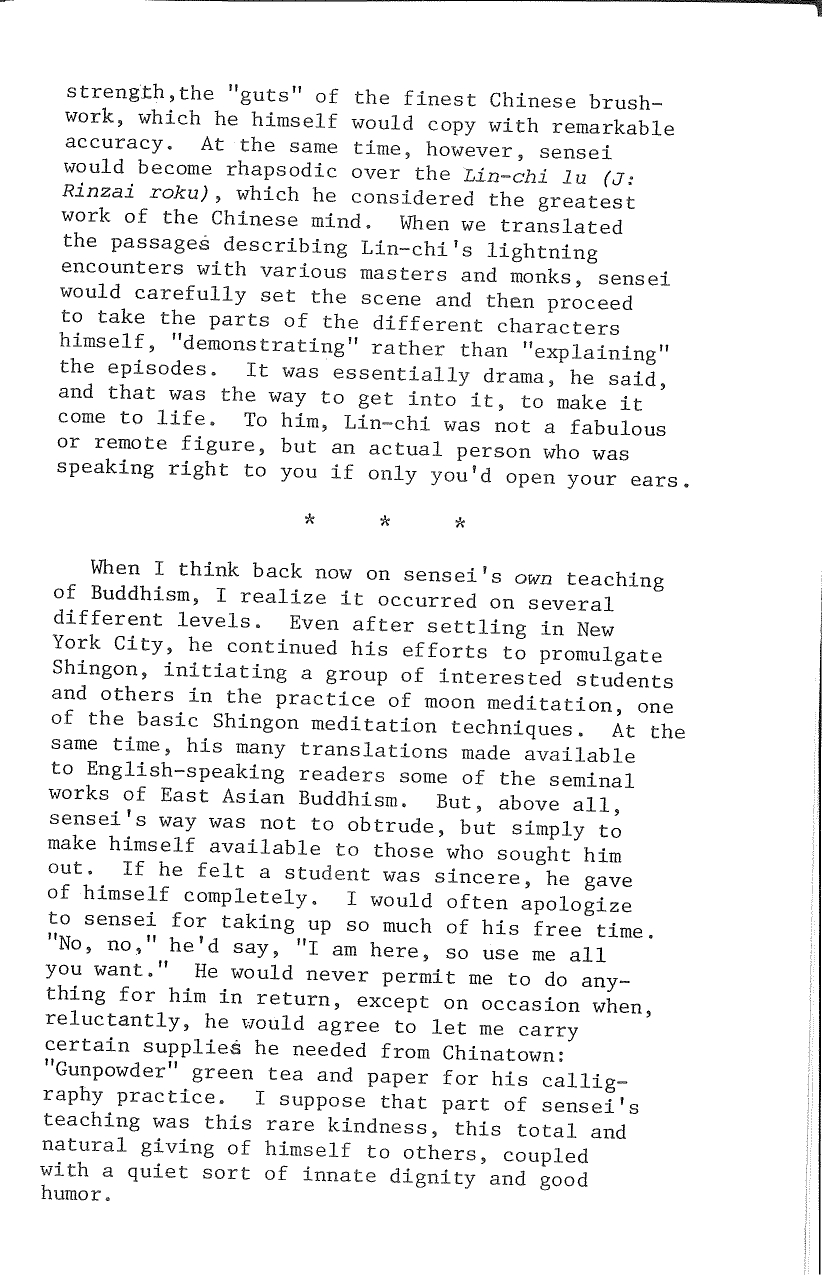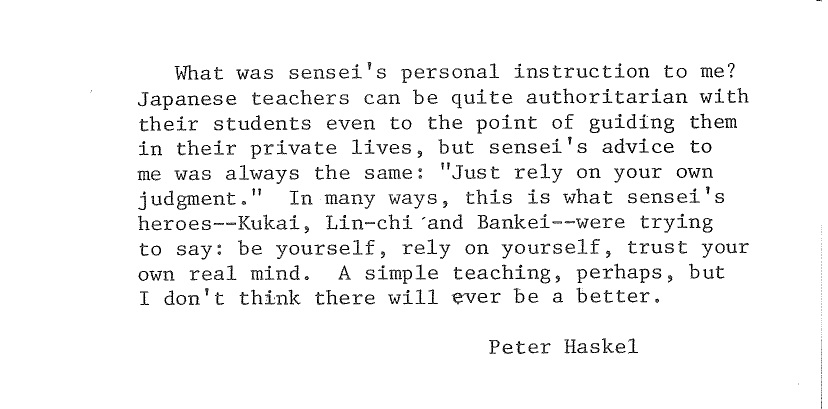ZEN MESTEREK ZEN MASTERS
« Zen főoldal
« vissza a Terebess Online nyitólapjára
Peter Haskel (1945-)
(First Zen Institute of America, New York)
盤珪永琢 Bankei Yōtaku (1622-1693)
PDF: Bankei Zen: Translations from the Record of Bankei
Translated by Peter Haskel; edited by Yoshito Hakeda
NY: Grove Weidenfeld, 1984"Song of Original Mind"
Translated by Peter Haskel
Szemelvények Peter Haskel: Bankei Zen c. művéből
Fordította: Szigeti György
In: Naparcú Buddha (I. fejezet / 1, 16, 17, 21, 23, 30, 31, 34, 35, 43, 46, 47, 53, 61, 67, 80, 81, 86, 100. alfejezet)
Angol nyelvű forrása: PDF: Bankei Zen: Translations from the Record of Bankei by Peter Haskel (with Yoshito Hakeda, Ed.), Grove, 1984
桃水雲渓 Tōsui Unkei (1612-1683)
PDF: Letting Go: The Story of Zen Master Tōsui [桃水和尚傳贊 Tōsui oshō densan]
Biography of Tōsui Unkei by 面山瑞方 Menzan Zuihō (1683-1769)
Translated with an Introduction by Peter Haskel
University of Hawai‘i Press, Honolulu, 2001
良寛大愚 Ryôkan Taigu (1758-1831)
PDF: Great Fool: Zen Master Ryōkan: Poems, Letters, and Other Writings
by Abe Ryūichi (1954-) with Peter Haskel
Honolulu: Kuroda Institute / Univ. of Hawaii, 1996The most complete book on the many aspects of Ryokan Taigu (1758-1831), who, after his teacher Kokusen of Entsuji died, left monastic Soto Zen life to humbly and with great austerity live for decades mainly as a hermit and nature mystic; when not in seclusion he was a great friend of little children and benefactor to the poor; his poems and calligraphy are famous; he wrote haiku poems to a nun who cared for him in his ailing last five years of life.
PDF: Zen Master Tales
Stories from the Lives of Taigu, Sengai, Hakuin,
and Ryokan, pp. 143-180
by Peter Haskel
Shambala, 2022
今北洪川 Imakita Kōsen (1816-1892)
Recollections of Kosen
by Peter Haskel
Zen Notes, 2004/4
沢庵宗彭 Takuan Sōhō (1573-1645)
PDF: Sword of Zen: Master Takuan and His Writings on Immovable Wisdom and the Sword Taie
By Peter Haskel; Translated by Peter Haskel
University of Hawai‘i Press, 2012
白隠慧鶴 Hakuin Ekaku (1686-1769)
PDF: Zen Master Tales
Stories from the Lives of Taigu, Sengai, Hakuin, and Ryokan
by Peter Haskel
Shambala, 2022Introduction 1
TAIGU TALES 25
SENGAI TALES 47
TALES OF HAKUIN AND HIS FOLLOWERS pp. 103-142
RYО̄KAN TALES 143
Abbreviations 181
Notes 183
Bibliography 228
Index 235
仙厓義梵 Sengai Gibon (1750-1837)
PDF: Sengai Stories
Translated by Peter Haskel
2003
佐々木指月 Sasaki Shigetsu (1882-1945), aka 曹渓庵 Sokei-an
PDF: Original Nature: Zen comments on the Sixth Patriarch's Platform Sutra
Translation and commentary by Sokei-an Sasaki
Edited by Mary Farkas, Robert Lopez, Peter Haskel
The First Zen Institute of America, iUniverse, Bloomington, 2010, 2012 byPDF: Three-Hundred-Mile Tiger: The Record of Lin-Chi Translation and Commentary by Sokei-An
by Sokei-An Sasaki
Edited by Mary Farkas, Robert Lopez, Peter Haskel
iUniverse, Bloomington, 2013, 394 pagesSokei-an translated the Record of Lin-chi (Lin-chi lu) from 1931 to 1933, in his first series of lectures. He felt that Americans needed original Chinese Zen source materials, translated and commented upon by a Zen master, and there were no such materials in those early days. Sokei-an was the first Zen master to translate the Record of Lin-chi and to give a commentary in English to Western students. The real historic value of Sokei-an's Lin-chi is in his commentary with its manifestation of Lin-chi's Zen.
大愚宗築 Daigu Sōchiku, aka Taigu (1584–1669)
PDF: Zen Master Tales
Stories from the Lives of Taigu, Sengai, Hakuin, and Ryokan
by Peter Haskel
Shambala, 2022Introduction 1
TAIGU TALES 25
SENGAI TALES 47
TALES OF HAKUIN AND HIS FOLLOWERS 103
RYО̄KAN TALES 143
Abbreviations 181
Notes 183
Bibliography 228
Index 235A lively collection of folk tales and Buddhist teaching stories from four noted premodern Japanese Zen masters: Taigu Sōchiku (1584–1669), Sengai Gibon (1750–1831), Hakuin Ekaku (1686–1769), and Taigu Ryokan (1758–1831).
Zen Master Tales collects never-before-translated stories of four prominent Zen masters from the Edo period of Japanese history (1603–1868). Drawn from an era that saw the “democratization” of Japanese Zen, these stories paint a picture of robust, funny, and poignant engagement between Zen luminaries and the emergent chonin or “townsperson” culture of early modern Japan. Here we find Zen monks engaging with samurai, merchants, housewives, entertainers, and farmers. These masters affirmed that the essentials of Zen practice—zazen, koan study, and even enlightenment—could be conveyed to all members of Japanese society in ordinary speech, including even comic verse and work songs.
In his introduction, translator Peter Haskel explains the history of Zen “stories” from the tradition’s Golden Age in China through the compilation of the classic koan collections and on to the era from which the stories in Zen Master Tales are drawn. What was true of the Chinese tradition, he writes—“its focus on the individual’s ordinary activity as the function, the manifestation of the absolute”—continued in the Japanese context. “Most of these Japanese stories, however unabashedly humorous and at times crude, impart something of the character of the Zen masters involved, whose attainment must be plainly manifest in even the most humble and unlikely of situations.”
羽毛田 義人 Hakeda Yoshito (1924–1983)
by Peter Haskel
ZEN NOTES, Vol. 30, No 10, October 1983, pp. 1-7.
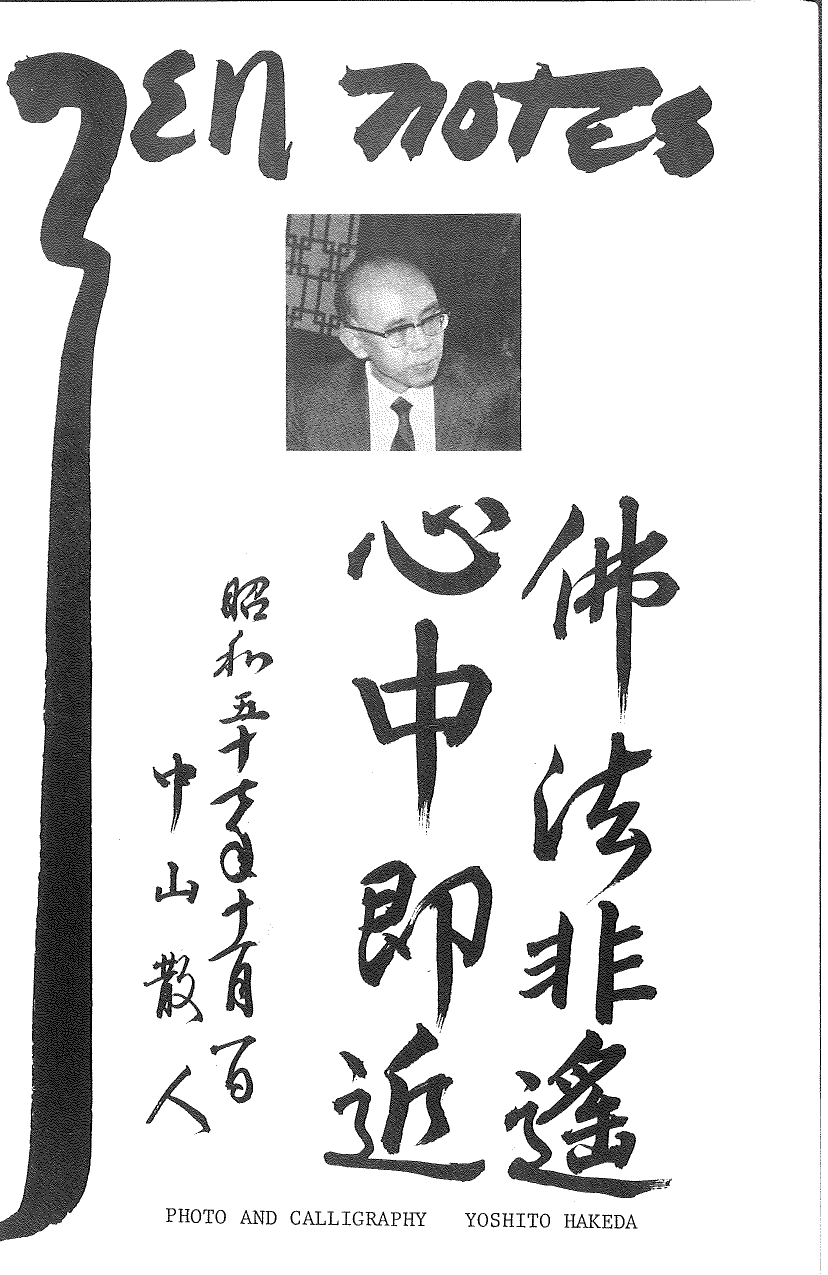
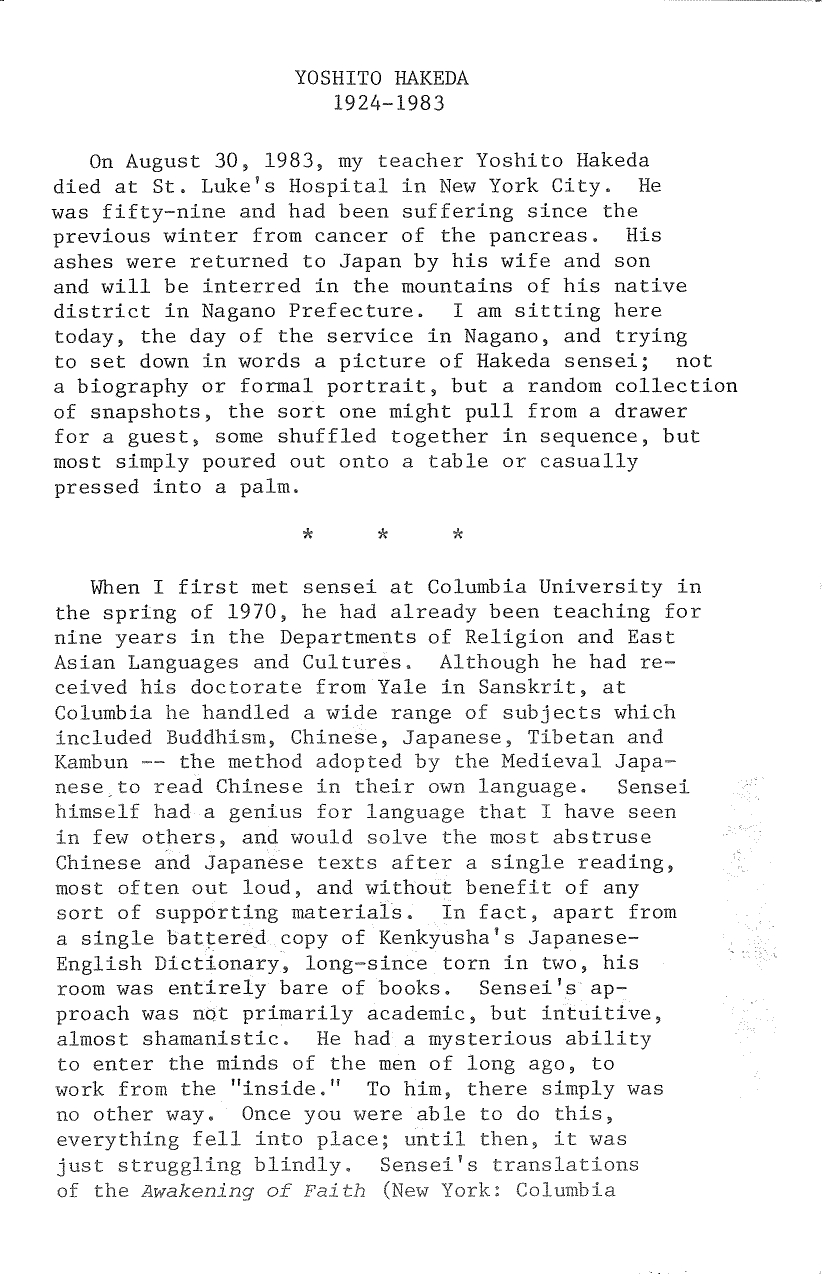
PDF: The Awakening of Faith. Attributed to Aśvaghosha, translated, with commentary by Yoshito S. Hakeda
